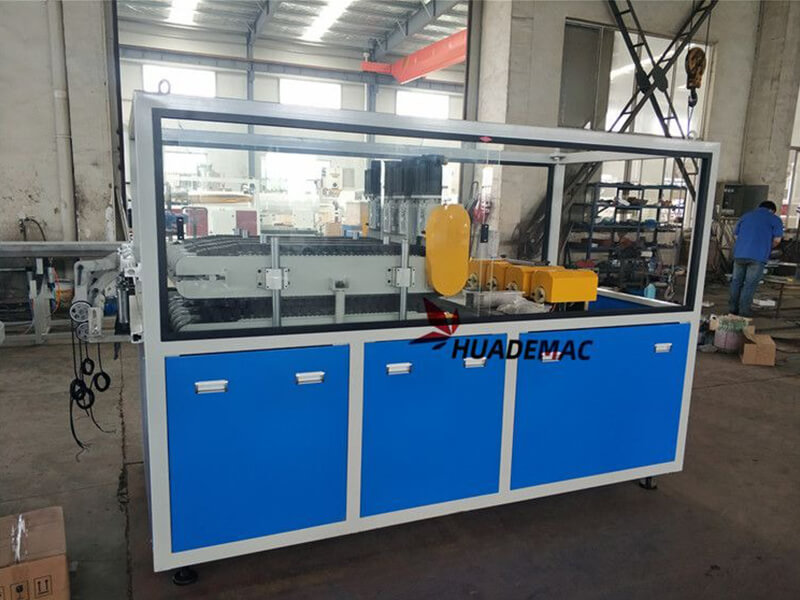Manufacturer of pipe technology solutions
- Any Questions?[email protected]
- Get in Tough+86-13601562675

In the production process, since PVC is a heat-sensitive material, its molding temperature should be strictly controlled. Especially RPVC, because its processing temperature is very close to the decomposition temperature, decomposition is often caused by improper temperature control. The extrusion temperature should be determined according to the formula, the characteristics of the extruder, the structure of the head, the speed of the screw, the position of the temperature measurement point, the error of the temperature measurement instrument and the depth of the temperature measurement point.
Temperature is an important factor affecting plasticizing quality and product quality. The temperature is too low, the plasticization is poor, the appearance and mechanical properties of the pipe are poor, and the weld line is obvious or the strength of the weld is low after passing through the shunt bracket. If the temperature is too high, PVC will decompose, resulting in discoloration and scorch, making the operation impossible.
RPVC melt has high viscosity and poor fluidity, and the screw heats up due to excessive frictional heat, which will cause the screw sticky material to decompose or make the inner wall of the pipe rough. Bright surface, improve the quality of the pipe inside and outside. The screw temperature is generally controlled between 80 and 100 °C. If the temperature is too low, the back pressure will increase, the output will decrease, and even the accident that the material cannot be squeezed out and the screw bearing will be damaged. Therefore, screw cooling should control the water temperature not lower than 70~80℃. The cooling method is to use water cooling through the copper tube inside the screw.
The speed of the screw speed is related to the quality and output of the pipe. The adjustment of screw speed is determined according to the specifications of the extruder and the pipe material. In principle, a large machine squeezes a small tube, and the speed is low; a small machine squeezes a large tube, and the speed is high. General ф45 single-screw extruder, screw speed is 20~40r/min, ф90 single-screw extruder, screw speed is 10~20r/min; twin-screw extruder 15~30r/min. Although increasing the screw speed can increase the output in a certain period of time, if the output is pursued too high, without changing the material and screw structure, it will cause poor plasticization of the material, rough pipe wall, and reduced pipe strength.
The tube blank must be sized and cooled immediately when it leaves the die. RPVC pipes generally adopt the method of internal pressure and external sizing. Usually, the compressed air pressure is stable in the range of 0.02~0.05Mpa. A storage cylinder can be set to keep the compressed air pressure stable. If the pressure is too small, the pipe will not be round; if the pressure is too large, the air plug will be easily damaged and cause air leakage, and the mandrel will be easily cooled, which will affect the quality of the pipe. If the vacuum method is used, the vacuum degree is about 0.035~0.070Mpa.
The pulling rate directly affects the output, and the thickness of the pipe wall. The slower the traction rate, the thicker the pipe wall; the faster the traction rate, the thinner the pipe wall, which will increase the longitudinal shrinkage rate of the pipe and increase the internal stress. Pipe size, qualified rate and use effect. During normal production, the traction speed should be closely matched with the extrusion rate of the pipe, and the traction rate should be slightly faster than the extrusion line speed by 1% to 10%.
In normal production, put the extruded pipe in the traction crawler, but the crawler does not clamp the pipe. Observe the difference in linear velocity between the crawler and the pipe. If the traction rate is slower than the extrusion rate, it should be adjusted and accelerated until the wall thickness meets the requirements. It can be used as a more suitable method to adjust the rate.